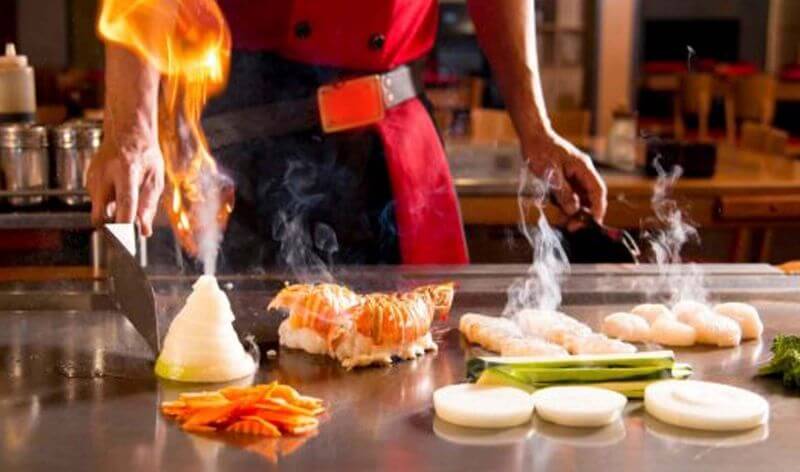Hibachi Flavoring | Japanese hibachi cuisine | Hibachi table restaurant
In the United States, Japanese hibachi cuisine is characterized by group dining around a large grill table. The head chef is the head chef. He prepares meals while posing for performances, brandishing knives, and performing skills with fire. The term "hibachi" refers to the type of grill. This dish is also called teppanyaki and usually includes animal protein, usually steak, chicken, shrimp, scallops or other seafood, as well as fried rice and various vegetables. In addition to the essential butter or oil, Japanese hibachi chefs use various spices to add flavor to their creations.
Dry Spices
The three main dry spices found in Japanese hibachi cuisine are garlic, ginger and sesame. Garlic has the strongest flavor when used in whole cloves, although mashed garlic and crushed garlic are also very pungent. Garlic powder and garlic salt are not as effective, but they are easy to use and can be used for months or even years. Ginger comes in many forms: fresh, pickled, candied, pasty and powdered. Fresh, whole roots are the first choice for cooking, although, like garlic, ginger paste and ginger powder provide convenient alternatives. There are three types of sesame: white, brown and black, and they can usually be roasted.
Soy Sauce
Soy sauce is fermented from soybeans, salt, water, and sometimes wheat. Soy sauce with high sodium content adds a unique salty taste to Japanese hibachi dishes. If you need to pay attention to salt intake, choose low-sodium varieties. The recipe for soy sauce, also called shoyu, was brought to Japan from China in the early Middle Ages. Japanese soy sauce is different from Chinese soy sauce because wheat is a typical main ingredient and has a slightly sweet taste. However, the highly regarded tamari soy sauce is darker and richer than other Japanese soy sauces and contains no wheat, so it is very suitable for those who are gluten intolerant.
Mirin
Milin is a sweet, golden rice wine. It is similar to sake but has a lower alcohol content. Some hibachi chefs refer to mirin simply as "rice wine." Mirin helps to stick sauces and glazes on food and gives the food a sweet taste. Unlike cooking, most wines must be refrigerated after opening.
Dipping Sauce
Hibachi table restaurant offers a variety of dipping sauces to match meat and vegetables. The most common seasonings include ginger, tahini and sauces. Ginger juice, usually watery and brown, contains ginger, garlic, soy sauce, white vinegar or sake, sugar, and sometimes onion, oil or lemon juice. Tahini includes garlic, soy sauce, mirin, sugar, and sesame oil and sesame seeds. Miso paste is made into a thin mixture of soy sauce, garlic, onion, sugar and oil.
The consistency of jam is stronger. Usually oranges or pineapples are used as raw materials, and they also contain soy sauce, oil and thickeners such as tomato sauce or honey. White sauce is sometimes called shrimp paste because it pairs well with shrimp and is more viscous. White sauce is based on mayonnaise and usually contains butter, rice vinegar, sugar, garlic and chili powder.





